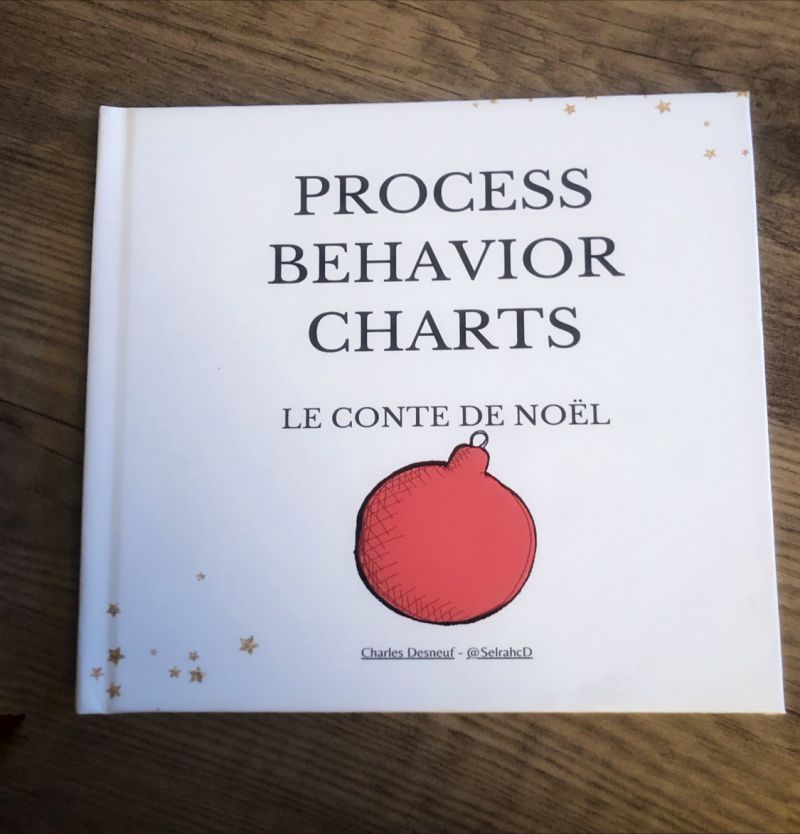Process Behavior Charts - A Christmas Tale
Last year, around the same period, I was thinking about Process Behavior Charts (PBC), a tool that helps in figuring out when you should or should not react when looking at data. I don't remember what the trigger was (probably somebody saying to try harder at something), but I thought that this tool should be more widely known.
Because Christmas was approaching, I decided to create a small Christmas Tale to introduce people to PBCs. And it worked because I know some people now use them at a past company where I worked.
PBC, the short version
Every process, or system, exhibits variation. You don't finish the same amount of User Stories every week, the defect rate of that machine producing widgets is not always 0.2, and the duration of an appointment with a doctor is not always exactly 15 minutes...
Variations come in two sorts: noise and signal. Noise is the normal variation you can expect from a stable system. Signal, on the contrary, are variations that demonstrate that your system is unstable, that there is something unknown about your system, and that you should investigate.
Some people (like, a lot of people) react to every data point they see, no matter if that data point is something that we should expect from the stable behavior of the system or if it's something more interesting we need to look into. A lot of time is lost looking at numbers, reacting to every variation going up or down. This leads to finger-pointing, time spent trying to understand something you won't be able to explain, and management helping by asking to work harder...
PBCs help in sorting what is signal and what is noise. They tell you if your system is stable and predictable. They tell you when you should look into why that data point is better or worse than another to understand what you can improve.
My Christmas Tale
So, I wrote a Christmas Tale, in French, more as a joke than anything, and published it on LinkedIn. I added a mention to Mark Graban, who is an expert in the Lean community and who wrote "Measures of Success", the book that introduced me to PBCs. Mark sent me a message right away to ask me if we could translate the story into English. I, of course, agreed. We exchanged a few emails, improved the story a little, translated it, and published it. Mark even bought the domain name of the fictional Santa Claus company, North Pole Box - that redirects to his website where he sells the "Measures of Success" book.
A few weeks after Christmas, I even received a printed copy with the French and English version of the story in my mailbox. Thanks, Mark!

Process Behavior Charts - The Christmas Tale
I'm sure that by now you would like to immerse yourself in that fairy land of PBC and Christmas.
Here is the English version:
And here is the French one:
Do you speak French and want to stop hating your tests ?
I've created a course to help developers to improve their automated tests.
I share ideas and technics to improve slow, flaky, failing for unexpected reason and hard to understand tests until they become tests we take joy to work with !
But you'll need to understand French...
Want to Know More About PBCs?
If you want to know more about PBCs, I encourage you to read Mark's book. The book explains PBCs but also demonstrates why most of the time we use numbers quite poorly, leading to overreaction, pressure, and no real improvement. The downside of the book is that once you've read it, a lot of meetings where your colleagues are sharing numbers will feel terribly unproductive to you...
Also, Daniel Vacanti recently published "Actionable Agile Metrics Volume II" that dives into PBC for flow metrics. I'm currently reading it, and this is a good book as well to understand what PBCs are and how you can use them.
Of course, the book on that subject is "Understanding Variation" by Donald J. Wheeler, who developed the idea of PBCs and closely worked with Edward Deming. I've recently ordered that book, so I can't tell if it's an easy read or not. From what I've read about it, it appears to be.
Speaking about Dr. Wheeler, Mark told me that he sent the link to the ebook to him. It's also a nice gift to know that my silly idea reached the eyes of a legend in statistics and process improvement.
